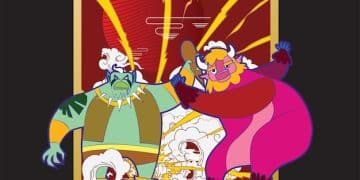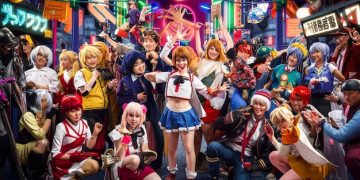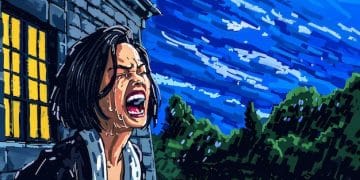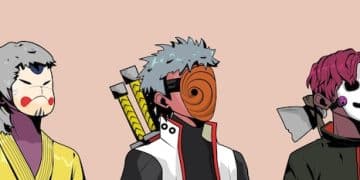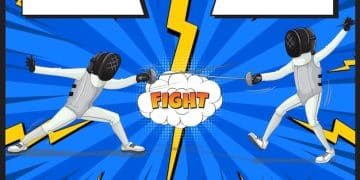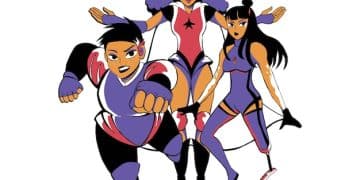Shonen Jump’s Art Style Evolution: Trends and Influences in US Manga
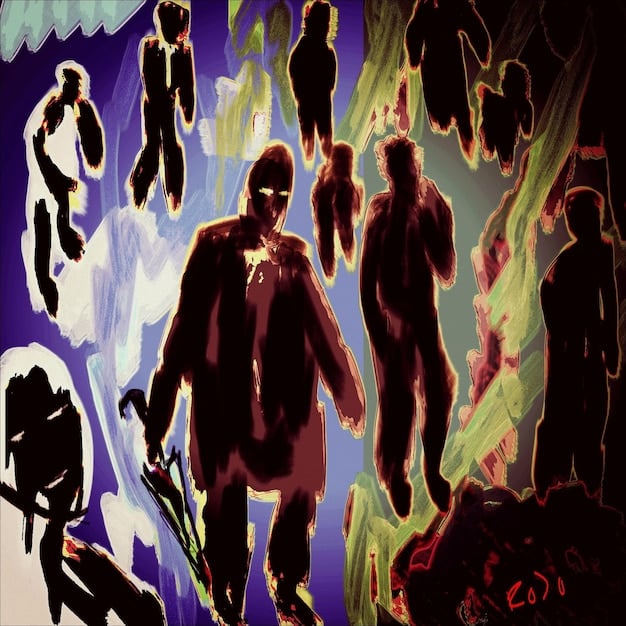
Shonen Jump’s art style evolution reflects a dynamic interplay of cultural influences, technological advancements, and shifting reader preferences, significantly shaping the landscape of US manga readership and creative trends.
The artistic journey of Shonen Jump’s art style evolution provides a compelling narrative of how Japanese manga adapts and influences the American comic landscape, shaping reader expectations and creative trends over decades.
Tracing the Origins of Shonen Jump Art Style
Shonen Jump, a cornerstone of manga culture, began its stylistic voyage with roots deeply embedded in classic Japanese art. Understanding its initial art style necessitates a glimpse into the historical and cultural milieu from which it emerged.
The early artwork in Shonen Jump was significantly affected by the conventions of Japanese manga art at the time, which included straightforward panel layouts, strong lines, and characters with expressive faces. These stylistic choices are reflective of both the era’s technical capabilities and cultural storytelling norms.
Pioneering Artists of the Era
Individuals like Osamu Tezuka, frequently hailed as the “God of Manga,” have had a profound effect on the aesthetic standards of Shonen Jump. His contributions established many of the visual tropes that are still used today, such as large, expressive eyes and dynamic action sequences.
- Osamu Tezuka’s Influence: Revolutionized manga with cinematic storytelling techniques.
- Early Shonen Conventions: Focused on clear narrative and character emotion.
- Limited Technology: Artwork relied heavily on pen and ink techniques.
- Cultural Context: Reflected post-war Japanese society and values.
In conclusion, the formative years of Shonen Jump’s art style was a amalgamation of cultural storytelling norms, technological limitations and the creative input of pioneering artists which paved the way for future stylistic explorations.
Key Influences on Shonen Jump’s Visual Identity
The visual identity of Shonen Jump has been molded by a complex interaction of factors, including Western art styles, significant cultural movements, and technological breakthroughs. These factors have collectively propelled its aesthetic development.
The impact of Western comics on Shonen Jump can be observed in dynamic panel layouts and character designs, which give an international flair to its storytelling style while preserving its distinct Japanese aesthetic.
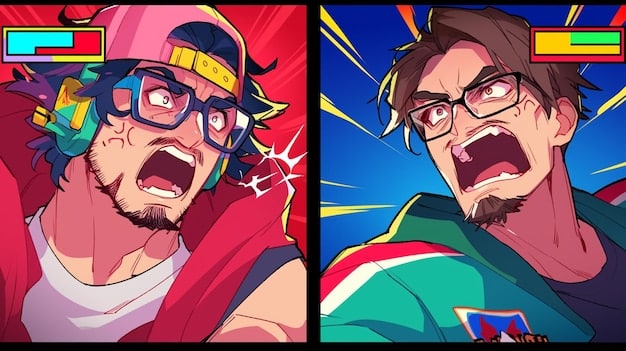
Western Comic Book Influences
The adoption of screen tones and varied inking methods, influenced by Western printing methods, has improved the complexity and visual depth of Shonen Jump’s artwork. These strategies enhance the aesthetic attractiveness of the panels, which makes them more immersive for readers.
- Screen Tones: Added depth and texture to black and white manga.
- Dynamic Layouts: Enhanced action sequences and visual storytelling.
- Character Design: Integrated Western anatomy with anime aesthetics.
- Printing Techniques: Improved image quality and detail.
All in all, Shonen Jump’s visual aesthetic reveals a blend of Western influences and artistic conventions which allows it to maintain cultural appeal while incorporating innovative methods that broaden its worldwide reach.
The Evolution of Character Design
One of the most conspicuous aspects of Shonen Jump’s art style evolution is the change in character design over time. This transition demonstrates shifting cultural values, audience tastes, and the creative freedom granted to artists.
The earliest Shonen Jump characters frequently had simpler designs with strong, expressive features. As the magazine grew, character designs grew more intricate, incorporating a broader spectrum of visual signals to express personalities and engage readers.
Trends in Character Aesthetics
Modern trends in character design prioritize complexity and diversity. Characters now have more elaborate costumes, distinctive hairdos, and nuanced facial expressions, all of which contribute to a more engaging and immersive story experience.
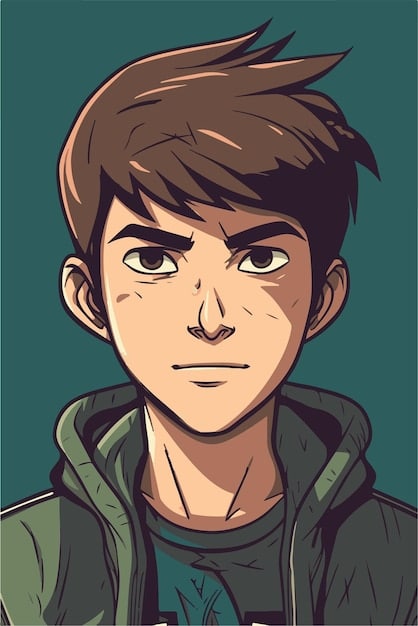
- Simplicity to Complexity: Evolution from basic to intricate designs.
- Expressiveness: Enhanced emotional depth in character portrayals.
- Diversity in Appearance: Reflecting broader cultural representation.
- Fashion and Accessories: Integral to character identity and storytelling.
In summary, the development of Shonen Jump’s character styles demonstrates a conscious effort to match shifting aesthetic tastes and narrative complexities which ultimately enhances audience engagement and cultural relevance.
Panel Layout and Storytelling Techniques
The development of storytelling techniques and panel architecture has significantly improved the visual flow and narrative effect of Shonen Jump manga. These improvements have allowed for more powerful and captivating storytelling.
Early Shonen Jump manga employed straightforward panel layouts, concentrating on clear and sequential narrative. As the medium evolved, artists began experimenting with more dynamic designs, such as asymmetrical panels and overlapping graphics, to heighten the intensity of action scenes and convey a sense of urgency.
Innovations in Visual Narrative
Innovative panel layouts and storytelling approaches provide a more dynamic reading experience. Artists use approaches such as splash pages, dramatic close-ups, and creative panel borders to evoke emotions and propel the story forward.
- Asymmetrical Panels: Create dynamic visual rhythms.
- Splash Pages: Emphasize key moments and dramatic reveals.
- Creative Borders: Enhance thematic elements and transitions.
- Close-Ups: Deepen emotional connections with characters.
Ultimately, the changes in storytelling approaches and panel design in Shonen Jump demonstrate a commitment to improving visual communication and narrative impact, resulting in an engaging and immersive experience for the audience.
The Influence of Technology on Manga Art
Technology has become an increasingly important role in developing manga art, impacting every element of production from design to distribution. Digital technologies provide artists with unparalleled opportunities to experiment and improve their work.
Traditional pen-and-ink methods have been progressively supplemented by digital tools like graphics tablets and software programs. These resources enable artists to produce more efficiently with better precision, enabling them to explore with different styles and effects.
Digital Tools and Techniques
Digital painting tools provide artists with a plethora of options for color, shading, and texture. Furthermore, digital platforms improve collaboration among artists and facilitate the dissemination of manga to a worldwide audience.
- Graphics Tablets: Offer precision and flexibility in drawing.
- Digital Painting Software: Provides diverse tools for coloring and shading.
- Online Platforms: Facilitate collaboration and global distribution.
- Animation Software: Creates dynamic, moving manga content.
To summarize, technology has transformed manga creation, empowering artists with new capabilities and prospects while also advancing the medium’s aesthetic and reach.
Shonen Jump’s Art Style Adaptation in the US Market
Shonen Jump’s artistic style has evolved to meet the expectations and choices of the American audience, paving the way for a stronger connection with US manga fans. This adaptation is critical for maintaining relevance and success in a varied market.
Localization efforts require modifying the artwork to reflect American aesthetic preferences while maintaining the distinctive characteristics of Shonen Jump. This involves adjusting character designs, color palettes, and thematic elements to resonate with US sensibilities.
Localization Strategies and Cultural Nuances
Localization tactics prioritize cultural sensitivity, ensuring that the material is appropriate for American viewers. This entails preventing potentially unpleasant representations or culturally inappropriate themes, so promoting inclusivity and respect.
- Cultural Sensitivity: Avoiding offensive or inappropriate content.
- Aesthetic Adjustments: Adapting visuals to match US preferences.
- Thematic Relevance: Focusing on themes that resonate with US audiences.
- Inclusive Representation: Promoting diversity in characters and stories.
In conclusion, Shonen Jump’s adaptation in the US market demonstrates a dedication to understanding and meeting the preferences of American readers while maintaining the magazine’s unique identity and artistic integrity.
Future Trends in Shonen Jump Art
The future of Shonen Jump’s art style is set to be defined by technological advances, changing audience expectations, and the continuous incorporation of worldwide influences. These forces will produce new aesthetic trends and creative approaches.
Artificial intelligence (AI) and Virtual Reality (VR) technologies hold tremendous potential for revolutionizing manga creation and consumption. AI can help artists with tedious activities such as inking and coloring, while VR can provide immersive manga experiences.
Emerging Technologies and Artistic Innovations
Artists will be able to explore with new aesthetic forms and push the boundaries of narrative by using innovative technologies. This includes experimenting with dynamic animation, interactive storytelling, and personalized art styles that adjust to user input.
- Artificial Intelligence (AI): Streamlining art production processes.
- Virtual Reality (VR): Creating immersive manga experiences.
- Interactive Storytelling: Engaging readers through dynamic narratives.
- Personalized Art Styles: Adapting visuals to individual preferences.
To summarize, the future of Shonen Jump’s art style is poised to be an exciting synthesis of technological innovation and artistic creativity, ushering in a new era of manga production and audience engagement.
| Key Point | Brief Description |
|---|---|
| 🎨 Origins | Influenced by Osamu Tezuka, emphasizing expressive faces and clear storytelling. |
| 🌍 Western Influence | Incorporated techniques like screen tones from Western comics. |
| 📈 Design Trends | Moved from simplicity to complex, diverse character aesthetics. |
| 💻 Tech Impact | Digital tools revolutionized manga creation and distribution. |
Frequently Asked Questions
▼
Osamu Tezuka, known as the “God of Manga,” revolutionized manga with cinematic storytelling, large expressive eyes, and dynamic action sequences, setting a foundation for Shonen Jump’s visual language.
▼
Western comics influenced Shonen Jump through the adoption of screen tones, varied inking methods, and dynamic panel layouts, enhancing visual complexity and appealing to a broader audience.
▼
Character designs have evolved from simpler, expressive features to more intricate designs with elaborate costumes, diverse hairdos, and nuanced facial expressions, reflecting audience tastes.
▼
Technology, including graphics tablets and digital painting software, has revolutionized manga creation by enabling artists to produce more efficiently and experiment with different styles, enhancing the medium’s aesthetic.
▼
Shonen Jump adapts its art for the US market through localization strategies that include cultural sensitivity, aesthetic adjustments, and inclusive representation, ensuring the content resonates with American audiences.
Conclusion
In conclusion, tracing the evolution of Shonen Jump’s art style reveals a fascinating journey shaped by cultural influences, technological advancements, and audience preferences. From its early roots in classic Japanese art to its adaptation in the US market and beyond, Shonen Jump continues to innovate and inspire, promising an exciting future for manga art.
